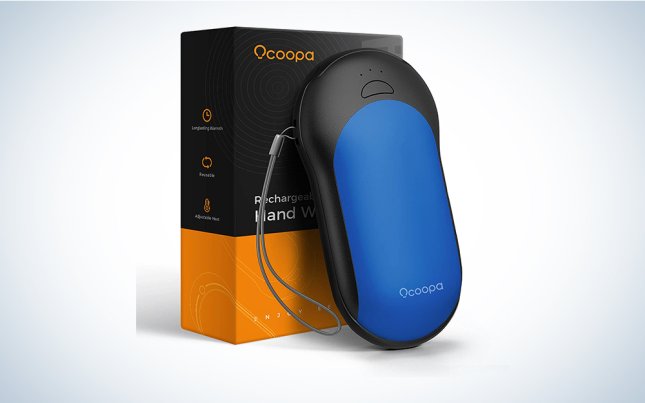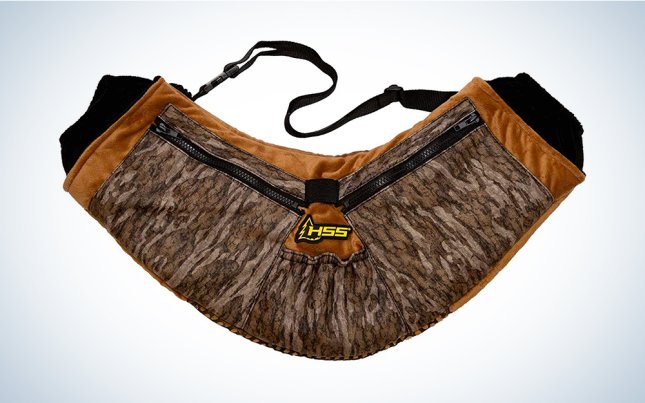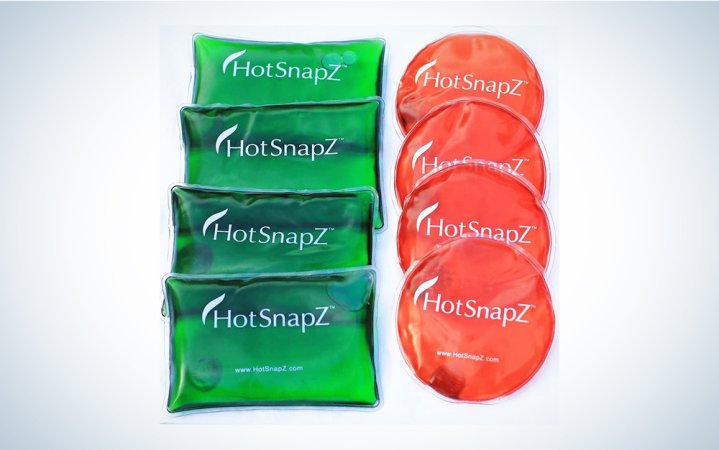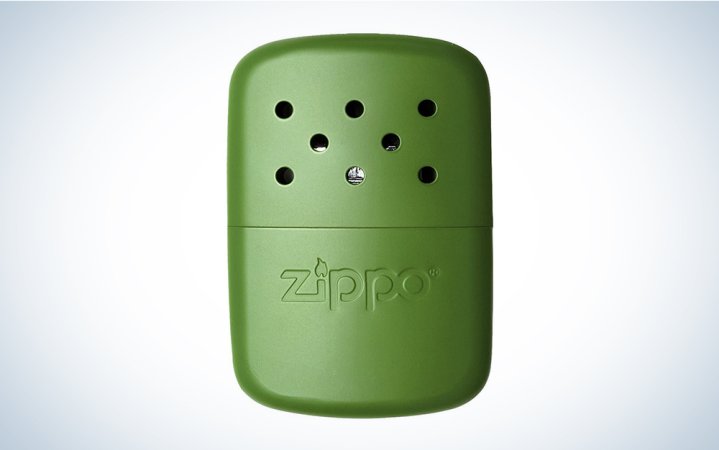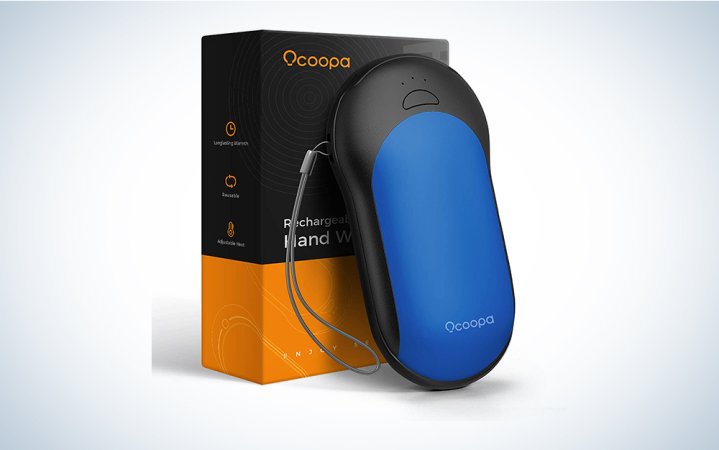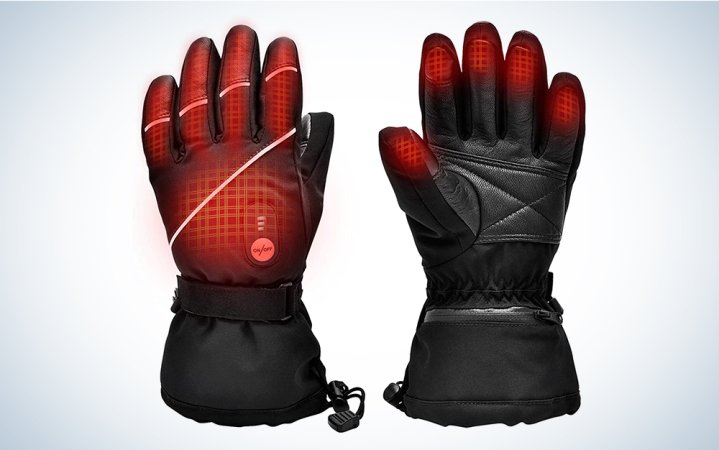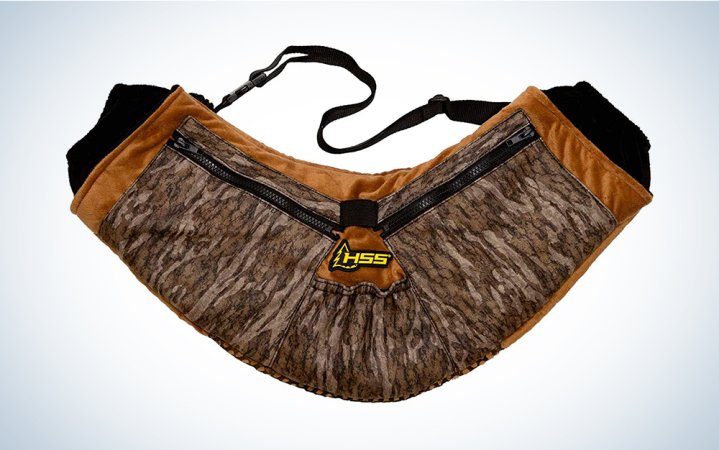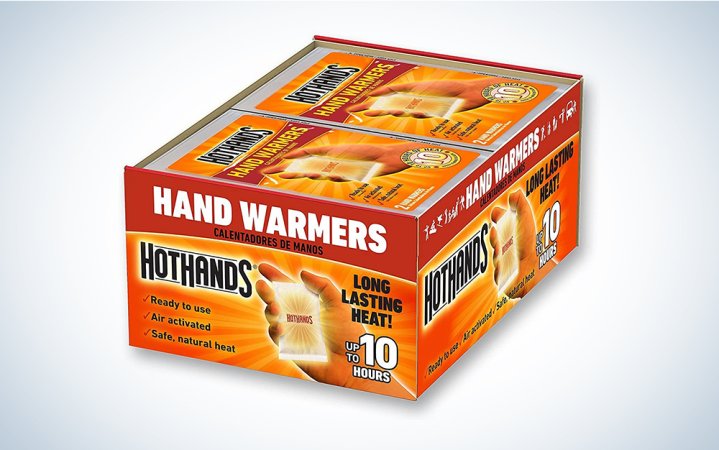We may earn revenue from the products available on this page and participate in affiliate programs. Learn more ›
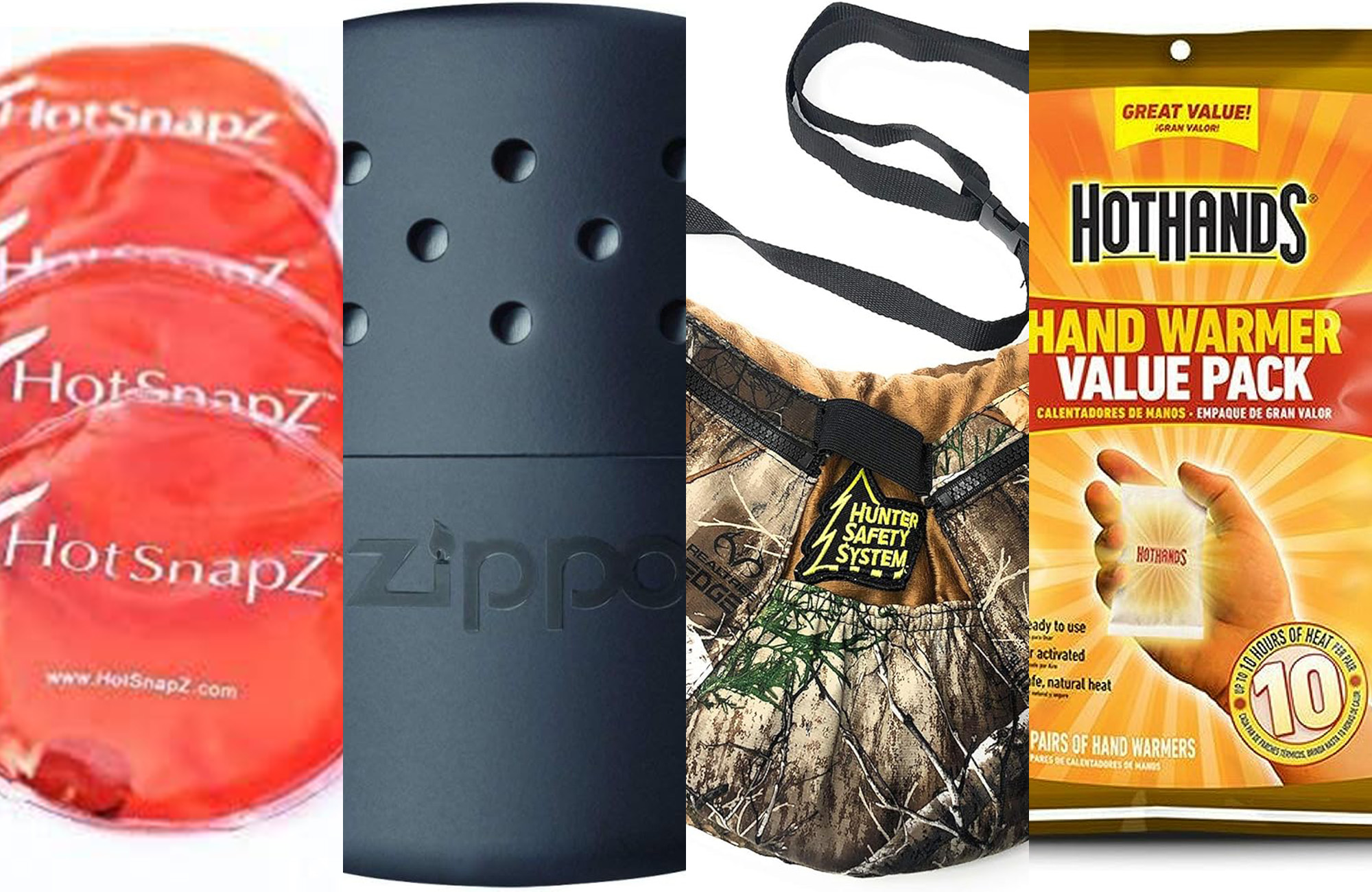
If you’re someone whose extremities suffer in the cold, think about investing in hand warmers. Have you ever tried tying your shoes, finding your car keys, or getting out your credit card when you can’t feel your fingers? Not fun. Cold weather can lead to poor circulation, which can, in turn, lead to uselessly frigid hands and frozen fingers. Hand warmers are a great way to keep you comfortable for hours at a time so you can get on with your life and stop desperately puffing warm air into cupped palms. They’re discreet, effective, and super portable, making them suitable for use on the go. They’re also great for camping, hiking, ice skating, and hockey, as well as non-sporting events like watching holiday parades, tailgating, waiting in line for the newest iPhone, you name it. You’ve probably used disposable hand warmers if you’ve ever gone skiing, but there are more long-lasting products we think you’ll want to see. The best hand warmers help you say goodbye to tripling up on gloves just to walk to the grocery store.
- Best overall: HotSnapZ Reusable Hand Warmers
- Best reusable long-lasting warmers: Zippo Hand Warmer
- Best rechargeable: OCOOPA Rechargeable Hand Warmer
- Best for skiing: Snow Deer Heated Gloves
- Best for hunting: Hunter Safety System Heated Muff
- Best budget: HotHands Warmers
How we chose the best hand warmers
We didn’t want to leave you with cold feet looking for the best hand warmers, especially if you’re trying to prevent frostbite or pack your emergency car kit. We looked at critical reviews, under recommendations, and conducted heavy research to find the best hand warmers.
The best hand warmers: Reviews & Recommendations
Hand warmers are just one of the many things you can bring with you on an outdoor adventure to keep you warm. From football games to fall hikes, one of our choices should stop frozen fingers before they happen.
Best overall: HotSnapZ Reusable Hand Warmers
Instant Heat
Pros
- Reusable
- Last 200-300 uses
- Instant heat
Cons
- Doesn’t last as long as other options on this list
Specs
- Reusable: Yes
- Duration: 30-40 minutes
- Temperature range: 115-120°F
These HotSnapz hand warmers produce instant heat without using electricity or other conducting material. They last for 30 to 40 minutes, so they’re the perfect companion for a brisk morning walk or a quick errand. After your first use, simply boil them for 10 to 15 minutes; (we recommend fixing yourself a cup of tea with some of the water while you wait), let cool, then snap the internal metal disk and soak up the heat.
Best reusable long-lasting warmers: Zippo Hand Warmer
A Pocket Furnace
Pros
- Refillable and reusable
- Long-lasting
- Flameless warmth
Cons
- Not TSA-friendly
Specs
- Reusable: Yes
- Duration: 6-12 hours
- Temperature range: N/A
Zippo hand warmers are the way to go if you think a refillable option is right for you. Zippo makes both a six- and 12-hour model in various colors and styles; each comes with a protective case, lighter fluid funnel, and detailed safety guide. You can also easily purchase additional lighter fuel when you need to refill.
Best rechargeable: OCOOPA Rechargeable Hand Warmer
Fast Charging
Pros
- Safe on skin
- Can be used as a power bank
- All-day warming
Cons
- Casing scratches easily
Specs
- Reusable: Yes
- Duration: Up to 15 hours
- Temperature range: Up to 131°F
This rechargeable hand warmer helps you stay toasty all day. It lasts between eight to 15 hours with a full battery from just three-and-a-half hours of charging time. Simply plug the device into a USB-C or micro USB-compatible charger. Adjust the heat by selecting one of the three levels based on the outside temperature, calculated for 5, 32, and 50 degrees Fahrenheit. Bonus: This one is safe on the skin.
Best for skiing: Snow Deer Heated Gloves
Flexible Insulation
Pros
- Water-resistant
- Can use with phone
- Soft lining inside glove
Cons
- Palm runs small
Specs
- Reusable: Yes
- Duration: 2.5-6 hours depending on settings
- Temperature range: Up to 150°F
These rechargeable heated gloves come in five sizes, from small to XX-Large. They’re perfect for a day on the mountain and stay warm between two-and-a-half to six hours. There are three temperature settings, starting at 100 degrees Fahrenheit and going all the way up to 150 degrees. Durable and water-resistant, these are also equipped with touch sensors so you can still use your phone. For more options, here’s our list of the best heated gloves.
Best for hunting: Hunter Safety System Heated Muff
Hot and Handy
Pros
- Storage pockets
- Soft lining
- Ergonomic
Cons
- Power bank not included
Specs
- Reusable: Yes
- Duration: N/A
- Temperature range: N/A
Looking for the best hand warmers for hunting? This muff from Hunter Safety System does, in fact, come heated, though you can also purchase a model sans extra heat. The interior is lined with fleece that contains heat coils that can stay active for up to five hours. You’ll need to charge and connect your own power bank, which can easily slide into the designated built-in pocket. Keep in mind that this model is less water-resistant than others, so if you foresee rain during an all-day hunt, look for something that is guaranteed waterproof.
Best budget: HotHands Warmers
Use and Toss
Pros
- Easy to use
- Long-lasting
- Provides consistent heat
Cons
- Not reusable
- Takes 15-30 minutes to heat up
Specs
- Reusable: No
- Duration: Up to 10 hours
- Temperature range: 140-160°F
These disposable hand warmers from HotHands are a staple when it comes to keeping warm. All you need to do is shake the pack vigorously for a couple of seconds, triggering a safe chemical reaction that will lead to up to 10 hours of consistent heat in 15 to 30 minutes.
Things to consider when looking for the best hand warmers
The best hand warmers are designed to keep you toasty throughout the duration of your outdoor activity. Some are reusable, some are rechargeable, and some are disposable, perfect if you want to toss them in the trash after you hit the slopes or get a drink après ski. We’ve broken down the various types of hand warmers out there and also provided some of our favorite options below.
Let’s start with the basics: chemically activated, reusable hand warmers
Reusable hand warmers are a fantastic way to keep cozy in cold weather. They eliminate the need to run out to store for replacements, plus, they can be easily shared. There are a few popular types of reusable hand warmers, differentiated by heating mechanism.
Some reusable pairs look like ice/heat packs found in first aid kits. These are chemically activated. Inside each pack is a metal disk that needs to be snapped or bent to release a heat-generating compound. Inside, sodium acetate (a food-safe ingredient found in salt), water, and energy mix to form solid crystals. This process produces an exothermic reaction, raising the pack’s temperature to roughly 130 degrees Fahrenheit in under 10 seconds. After a pack’s first use, you’ll need to boil the hand warmers for approximately 10 minutes before using them again, effectively reactivating the chemicals and returning the sodium acetate to its liquid form. These typically last between 30 minutes to an hour, though you can extend the heating time by adding extra packs or keeping them in coat pockets. If you’re an athlete, you can use them for additional relief on sore muscles. They are safe on the skin, but of course, take precautions when handling hot objects.
What are the best hand warmers for longevity?
If you need more than an hour of heat time but like the idea of simple reusable hand warmers without worrying about recharging, lighter-fuel-based models are the best option for you. Yes, we understand that filling something with lighter fluid, activating it, and stuffing it in your pockets seems a little outlandish, but trust us when we say you’ll keep warm all day.
Much like a regular lighter, these hand warmers, once filled with fuel, use a catalytic burner to generate heat. (Unlike a regular burner, you won’t see any external flames.) To ignite, hold a flame to it for roughly 10 seconds. Doing so will create a small internal furnace that can burn anywhere from six to 12 hours, depending on the model. Remember, once the warmer is ignited, you won’t be able to stop the heat until it naturally burns off. You can, however, place the hand warmer on a fireproof surface once you’re done using it and let it naturally smolder out.
Refillable hand warmers are not meant to be applied directly to the skin; most come with a small pouch into which you can place the warmer and then hold or slip into a coat pocket. Due to the delicate nature of the fill material, a.k.a. flammable fluid, we don’t recommend using these for intense sports such as skiing, snowboarding, ice skating, or hockey. We do, however, recommend them for long hikes, camping trips, cold offices, and cross-country car rides. There’s nothing worse than driving through Colorado in the middle of winter when your heat is broken.
Consider rechargeable hand warmers
If you’re ready to get a little more high-tech, plenty of rechargeable hand warmers are out there. These typically use electricity and a lithium-ion battery to generate heat. The models might be slightly thicker than refillable options, but they don’t differ too much in overall size, so they’ll still fit nicely in pockets or gloves.
The pros of rechargeables include long-lasting warmth with the ability to heat between two to eight hours. Plus, if you’re done with your outdoor activity or sufficiently warmed up, you can simply turn off the device. Many have heat-customization settings and the ability to charge other electronic devices simultaneously. You just have to remember to charge them. Simply plug in the hand warmer when not in use, and you’ll never be left out in the cold.
While we love a rechargeable option, there are a few cons you should know about. Rechargeable hand warmers are susceptible to water damage, so it’s probably best to keep them away from snow and sleet. Also, heat consistency can be a bit sporadic depending on the temperature outside. The overall heating time can also be affected by the cold, impacting the battery lifespan. Overall, we consider these to be minor impediments because a rechargeable warmer’s heating time is guaranteed to be longer than a chemically activated option, and the custom control is far greater than a lighter fluid-filled hand warmer.
Do you plan on hitting the slopes?
One of the most common reasons to purchase hand warmers is to keep your fingers from freezing while on the mountains. Though there are some amazing regular ski and winter gloves out there (heated, featured above, and not heated), it doesn’t hurt to have a little extra warmth, especially if you’re outside shredding all day. Hand warmers for skiers or snowboarders usually need to fit inside the glove rather than slide inside a coat pocket; they also need to be relatively flexible or small if you’re skiing with poles.
Though certainly non-traditional, it’s worth looking for glove/hand-warmer hybrids. Heated gloves use the same lithium-ion battery technology as the rechargeable ones listed above, but the active heaters are fit to the glove, so you can maintain grip and flexibility without maneuvering around a large chunk of plastic and metal. Plus, you won’t have to worry about the snow because these gloves are designed with an outer waterproof shell, which protects the batteries from any liquid damage.
Our second favorite option for skiing is the disposable hand warmer from brands like HotHands or Little Hotties. We’ll dive deeper into disposable hand warmers when we talk about our favorite budget pick, but these are a good option to keep in the back of your brain when thinking about ski-appropriate heating options. And when you’re done skiing, you can slip into a pair of heated slippers, or shoes with heated insoles, for warmth and comfort in the lodge.
Do you need something classic for hunting?
While muffs aren’t going to help much if your hands need to be out and at the ready, they’re a traditional way to stay cozy in a blind or tree stand. Muffs are, of course, reusable and can be adjusted to fit your frame. They’re made from many materials, including fur, shearling, or synthetic fabric. The outer layer will often be water-resistant and windproof, so you won’t need to worry about inclement weather. Some muffs even have special internal pockets for extra hand warmers to slide in, and others come with external pockets or shell pockets, so not only will your hands stay warm, but you’ll also get some additional storage space. A muff’s durability and reliability make it a great choice for hunters everywhere. We recommend bringing this and maybe one or two disposable hand warmers along with you, just in case you need even more warmth on those brisk early mornings.
Best budget hand warmers: What you get for under $20
Luckily, hand warmers don’t tend to be prohibitively expensive, unless you’re looking for high-end gloves or a really large rechargeable battery. That being said, reusable options will be more expensive than disposable ones, though disposable ones may be less cost-effective over time, depending on how you use them. If you want a more budget-friendly reusable hand warmer, the first thing to look for is brand reputation and clear safety guidelines; this is especially true if you go for something chemically activated or lighter-fluid-based. Disposable hand warmers are likely to be the cheapest option and work great for almost any outdoor activity; They’re thin and flexible, and they slide easily into gloves or pockets.
FAQs
Technically, yes. The expiration for each product is brand-specific. For example, the HotHands warmers we listed above have a shelf life of three to four years. Rechargeable hand warmers usually have a life span that includes a certain amount of charges (typically 300). Low-tech chemically activated chargers also tend to have an expiration date; HotSnapZ usually become defective after 200 to 300 snaps. Check out each product’s specs for more information on lifespan.
Like reusable hand warmers, disposable hand warmers rely on chemical activation instead of lighter fluid or lithium batteries. Each pouch typically includes salt, iron powder, activated carbon, and a little water. When the pouch is taken out of its airtight seal and exposed to oxygen, the iron powder causes an exothermic reaction, generating heat. The carbon helps evenly disperse the heat, and an absorbent material like wood or a polymer helps retain it throughout the day.
Generally speaking, you do not need to purchase a separate hand warmer pouch. Refillable hand warmers will definitely need to be placed in a pouch to avoid burns, but the model you buy should come with one. Of course, if you end up losing it, definitely place an order for another. Other hand warmers, including rechargeable, chemically activated, and disposable styles, are safe on the skin once they reach the appropriate temperature. If you want an extra barrier because it’s just a little too hot in the mitten, you can place them in bags or wrap them in a thin cloth. We recommend using sunglasses bags or thin socks.
Handwarmers using carbon, charcoal, and iron compounds are allowed in carry-on and checked baggage. Handwarmers that use hazardous or flammable liquids are not allowed. Check TSA and FAA guidelines for more details.
Final thoughts on the best hand warmers
- Best overall: HotSnapZ Reusable Hand Warmers
- Best reusable long-lasting warmers: Zippo Hand Warmer
- Best rechargeable: OCOOPA Rechargeable Hand Warmer
- Best for skiing: Snow Deer Heated Gloves
- Best for hunting: Hunter Safety System Heated Muff
- Best budget: HotHands Warmers
The best hand warmers for you fit your lifestyle and needs. If you’re active in short bursts, a reusable, chemically activated option might be right for you. If you’re going on longer camping trips with no electricity in sight, grab a refillable, lighter-fuel-based model. If you’re constantly going numb in the fingertips and need something reliable and reusable, reach for the rechargeable one. And if you just need something to get you out and about or on the slopes with all-day protection from the cold, consider a disposable model. No matter what, stay bundled out there.

